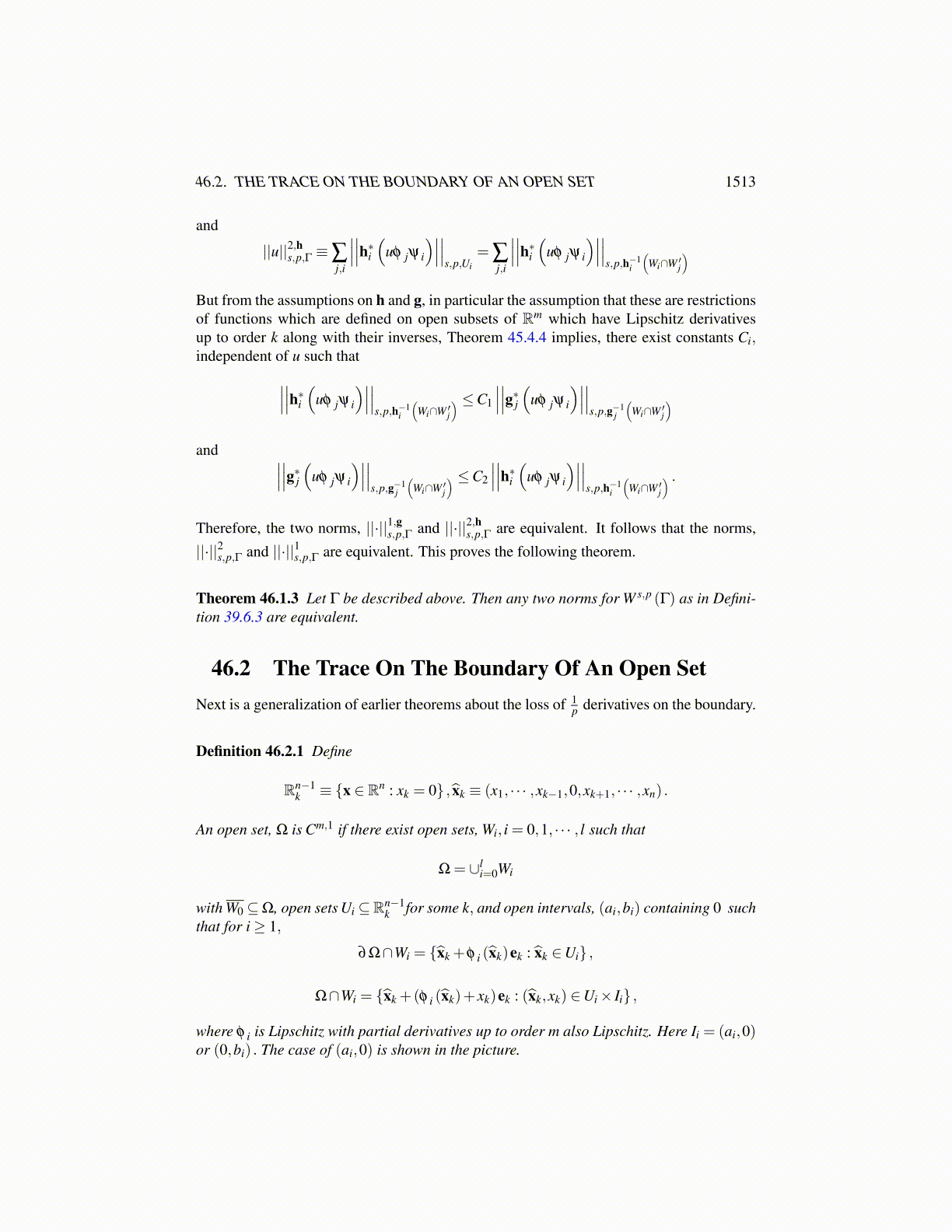
Chapter 46
Sobolev Spaces On Manifolds46.1 Basic Definitions
Consider the following situation. There exists a set, Γ ⊆ Rm where m > n, mappings,hi : Ui→ Γi = Γ∩Wi for Wi an open set in Rmwith Γ⊆ ∪l
i=1Wi and Ui is an open subset ofRn which hi one to one and onto. Assume hi is of the form
hi (x) = Hi (x,0) (46.1.1)
where for some open set, Oi, Hi : Ui×Oi→Wi is bilipschitz having bilipschitz inverse suchthat for G = Hi or H−1
i ,Dα G is Lipschitz for |α| ≤ k.For example, let m = n+1 and let
Hi (x,y) =(
xφ (x)+ y
)where φ is a Lipschitz function having Dα φ Lipschitz for all |α| ≤ k. This is an example ofthe sort of thing just described if x ∈Ui ⊆Rn and Oi =R, because it is obvious the inverseof Hi is given by
H−1i (x,y) =
(x
y−φ (x)
).
Also let {ψ i}li=1 be a partition of unity subordinate to the open cover {Wi} satisfying ψ i ∈
C∞c (Wi) . Then the definition of W s,p (Γ) follows.
Definition 46.1.1 u ∈ W s,p (Γ) if whenever {Wi,ψ i,Γi,Ui,hi,Hi}li=1 is described above
with hi ∈Ck,1, h∗i (uψ i) ∈W s,p (Ui) . The norm is given by
||u||s,p,Γ ≡l
∑i=1||h∗i (uψ i)||s,p,Ui
It is not at all obvious this norm is well defined. What if{W ′i ,φ i,Γi,Vi,gi,Gi
}ri=1
is as described above. Would the two norms be equivalent? To begin with consider thefollowing lemma which involves a particular choice for {Wi,ψ i,Γi,Ui,hi,Hi}l
i=1 .
Lemma 46.1.2 W s,p (Γ) as just described, is a Banach space. If p > 1 then it is reflexive.
Proof: Let L : W s,p (Γ)→∏li=1 W s,p (Ui) be defined by (Lu)i ≡ h∗i (uψ i) . Let
{u j}∞
j=1
be a Cauchy sequence in W s,p (Γ) . Then{
h∗i (u jψ i)}∞
j=1 is a Cauchy sequence in W s,p (Ui)
for each i. Therefore, for each i, there exists wi ∈W s,p (Ui) such that
limj→∞
h∗i (u jψ i) = wi in W s,p (Ui) .
1513